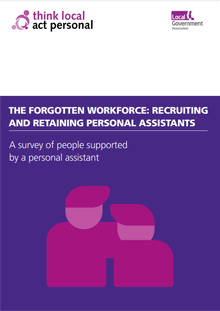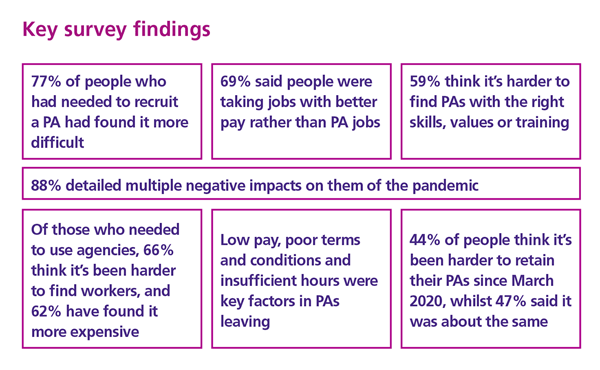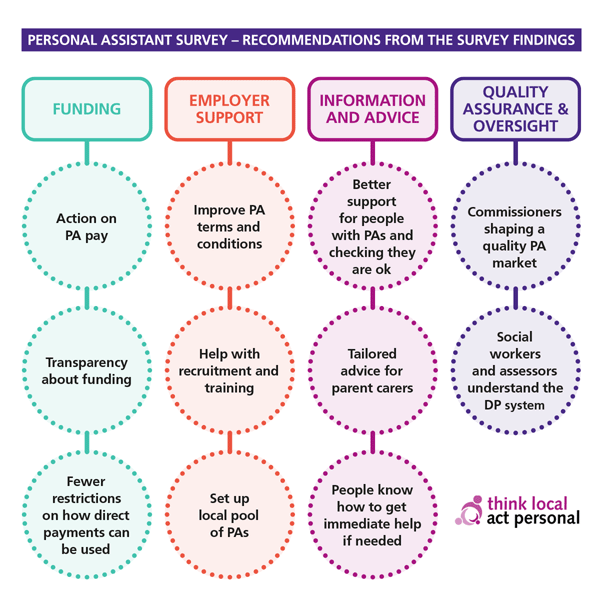Personal Assistant Survey - The Forgotten Workforce

Around 70,000 people in England employ a personal assistant (PA), usually through taking a direct payment or personal health budget. What was the experience of people who employ a PA of recruiting and retaining them between March 2020 and January 2022?
This report (opens new window)is the result of an online survey with people supported by a personal assistant to explore the issues they faced. Nearly 1,000 people participated – a very good response. People told us that PA recruitment has got harder, both in terms of a shortage of applicants and their suitability for the work. Low pay, poor terms and conditions, and restrictions on what people can pay are the primary drivers for this, alongside the challenges of the Covid pandemic. Download a two page summary (opens new window).

The recommendations in the report come from the findings of the survey and are grouped into four themes: funding; support for people who employ personal assistants; information and advice; and quality assurance and oversight.

- The most urgent action is for funders to enable PA pay to reflect local market conditions.
- Greater transparency about how direct payment or personal health budgets are arrived at is needed, and this should include the costs related to finding and employing PAs.
- Funders should place fewer restrictions on how direct payments and personal health budgets can be used by people supported by a PA.
- Local and central government and the NHS need to offer more help with PA recruitment, training and employment advice.
- Commissioners need more quality assurance and better oversight of their local PA market. They should be also proactive in checking the quality, reliability and standard of support from those they commission to assist people supported by PAs.
The full report shines a light on the needs of people who employ personal assistants, recognising the valuable role they play as part of the wider social care workforce. The detailed findings and people’s personal experiences bring to life many of the points in the survey, which should be required reading for social workers, commissioners and those who work with direct payment recipients.
